Goju Ryu is one of the four main karate styles, notable for having an even mix of “soft” and “hard” styles. Tang Soo Do is considered a Korean equivalent of KarateKarate; it combines principles from Taekkyeon and northern Chinese Kung Fu with some Karate thrown into the mix. Like Goju Ryu, Tang Soo Do has multiple forms known as Hyeong (kata in KarateKarate) and uses one-step sparring to train offensive/ defensive techniques.
Despite sharing common principles, both styles differ, so comparing Goju Ryu karate vs Tang Soo Do- which is better? Both styles are well-rounded for practical applications. However, Goju Ryu is more suited to close-quarter combat because it emphasizes joint locks, grappling, and short strikes. Tang Soo Do draws its backbone from Shotokan karate and heavily prioritizes kicking; it also includes weapon training for high-ranked practitioners (staff, daggers, etc.).
From the brief overview of Goju Ryu and Tang Soo Do, the former seems better suited to close-quarter fights. At the same time, the latter has more kicks and incorporates weapons training. However, certain Goju Ryu schools train students in weapons like the Bo, Sai, Nunchaku, and Tonfa. Goju Ryu also has the same basic kicks as Tang Soo Do (front kick, side kick, round kick, etc.), but not as much spinning and jumping.
| Goju Ryu Karate | Tang Soo Do | |
|---|---|---|
| Origin | Created by Chōjun Miyagi, its name was conceived during the 1929 All Japan Martial Arts Competition | Doesn’t have the long-range capabilities of Tang Soo Do, or Shotokan Karate, plus traditional Goju Ryu schools are quite rare |
| The Meaning | Goju Ryu roughly translates to “hard-soft” style and combines straight closed-hand strikes with circular open-hand blocks and deflections | Tang Soo Do in Korean Hanja translates to “the way of the tang hand”, a reference to the Chinese Kung Fu origins of this fusion style |
| Strengths | Develops your mind and body, has just 12 katas that you practice rigorously, focuses on efficiency and practicality over flashiness | A more efficient version of Taekwondo, with realistic kicks and a more comprehensive selection of hand strikes |
| Weaknesses | Doesn’t have the long-range capabilities of Tang Soo Do or Shotokan Karate, plus traditional Goju Ryu schools are quite rare | Tang Soo Do has its origins in Shotokan, which prioritizes speed and power, ideal for ending a fight quickly |
| Effectiveness | In a self-defense scenario, Goju Ryu can be extremely effective against untrained opponents with its short, powerful strikes and arm/ neck locks | Emerged in Korea during the post-WW2 occupation period as a fusion style created with a karate backbone |
| Difficulty | Provided you find a good school, Goju Ryu isn’t all that different from any other Karate style and has just 12 Katas | Basic movements are no different from karate or Taekwondo, and live sparring is restricted to intermediate or high-ranked practitioners |
| Who Should Learn It | Anyone who wants to develop their body and spirit while also learning valuable self-defense techniques | For anyone who wants a more practical version of Taekwondo, Tang Soo Do also acts as a great base for learning other arts |
Which Is Better In An Actual Fight- Goju Ryu Or Tang Soo Do?
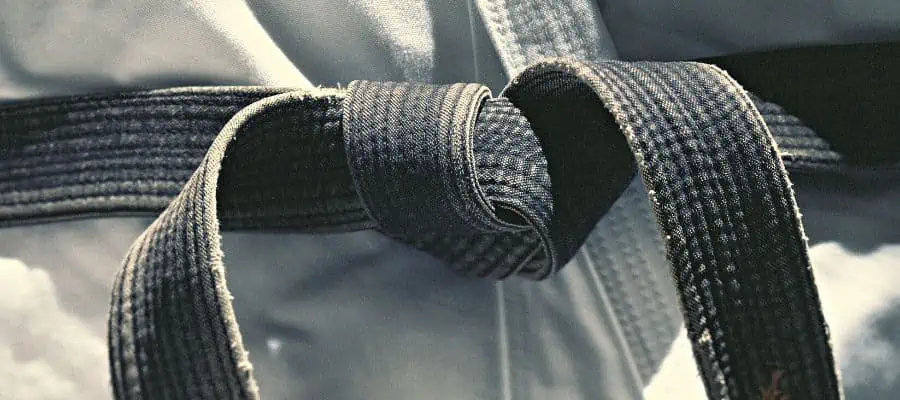
Both Goju Ryu and Tang Soo Do have their strengths, and it all comes down to your own proficiency + physical conditioning. Either martial arts will serve you well against untrained opponents, but you must remember that street fights have no rules. If you ever find yourself in a situation where the other person might have a weapon or several buddies backing him up, your best defense is running.
Of course, you should also pay attention to your surroundings and not make yourself out to be an easy target. This includes walking without headphones in your ear, not visiting shady parts of town late at night, etc. But suppose you’re forced to defend yourself or a family member. In that case, you can use any hand strikes, joint locks, and kicks from Goju Ryu or Tang Soo Do to put down your attacker quickly.
Goju Ryu is particularly effective because, in an actual fight, you’ll often be rushed by the other guy, ending up in a close-quarters brawl. From here, Goju Ryu’s ability to deliver loads of damage with both closed and open-hand strikes will let you stun your attacker or knock him out. Tang Soo Do gives you more range with its kicks, and it’s more practical than Taekwondo, which means the kicks aren’t telegraphed with flashy jumps or spins.
Is Tang Soo Do Just Taekwondo With Punches?
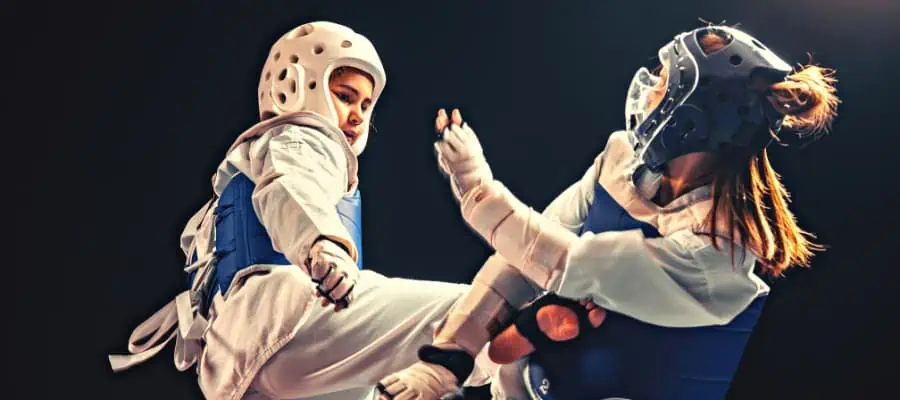
No, this is a false claim made by people who haven’t practiced either style to downplay the uniqueness of Tang Soo Do. Even Taekwondo has punches, but most competitions focus on kicking and showing off your form. Taekwondo schools treat the fighting style as a sport; it’s meant to be accessible to a large portion of the population.
Tang Soo Do is a traditional martial art that prioritizes practicality and efficiency. It also has points-based sparring, but Tang Soo Do emphasizes kicks and punches equally.
While Tang Soo Do shares many similarities with Taekwondo, its practitioners consider it a closer cousin of KarateKarate instead. Tang Soo Do’s kicks are similar to Taekwondo. Still, students are trained to generate power by torquing the hip, more so than Taekwondo, which focuses on speed and precision.
Tang Soo Do kicks are also lower than Taekwondo, with much less jumping and full-body rotation. Traditionally, Taekwondo doesn’t include weapons training, but bows, staffs, daggers, etc., are part of the standard Tang Soo Do curriculum. Tang Soo Do practitioners are taught weapon skills after reaching an intermediate competency level.
Origins Of Goju Ryu Karate
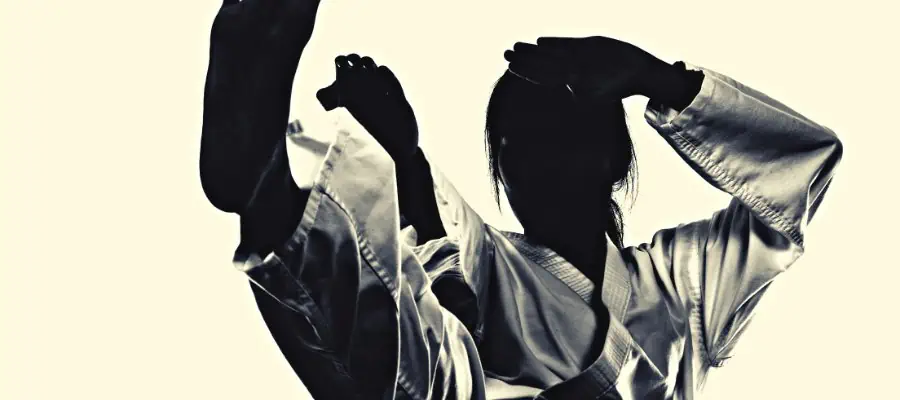
Goju Ryu karate was created by Okinawan Chojun Miyagi, who’s considered Higaonna Kanryo’s prodigy. Since Higaonna was a Shuri-te master, Miyagi got his influence for the “hard” elements of Goju Ryu from him. Miyagi also trained in Fuzhou under several Chinese masters, and the Fujian White Crane style inspired some of Goju’s “soft” elements.
In 1929, delegates from mainland Japan flooded into Kyoto for the All Japan Martial Arts Demonstration, and Miyagi sent his top students to represent their school. When one of the student’s fellow demonstrators asked what this style was called, Miyagi’s student made up Hanko Ryu on the spot. Upon learning of this, Miyagi decided on an official name for the style- Goju Ryu.
Origins Of Tang Soo Do
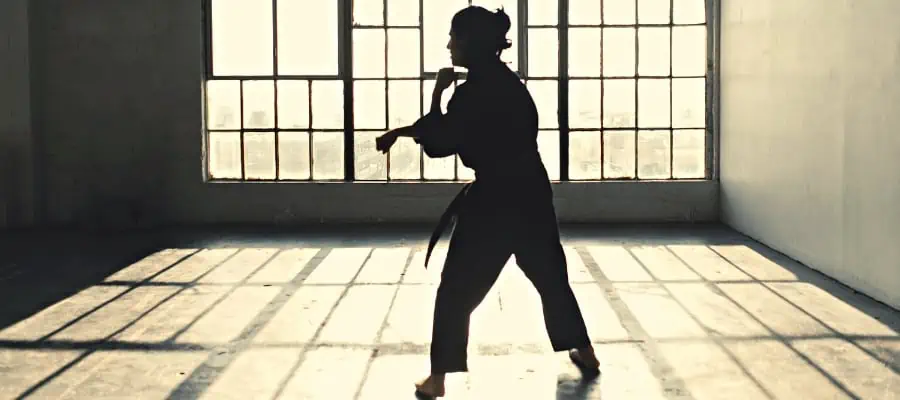
Tang Soo Do is a fusion style that combines traditional Korean martial arts, such as Soo Bahk Do and Taekkyeon, with Chinese kung fu and Karate. The karate influence came during the Japanese occupation of Korea when schools were banned from teaching traditional Korean martial arts. During this period, Master Hwang Kee traveled to China and learned the martial arts of the Tang dynasty.
Returning to Korea after the Japanese had left, he discovered that KarateKarate had become quite popular with the young folk. Rumors say that Hwang Kee got his hands on a Shotokan karate book and incorporated some of its techniques into his style.
This laid the foundation for the Moo Duk Kwan. A “Kwan” is what you call a martial art school in Korea, and 5 of these formed in the post-WW2 era- each with their own version of Tang Soo Do.
Comparing How Difficult It is to Learn Both Styles
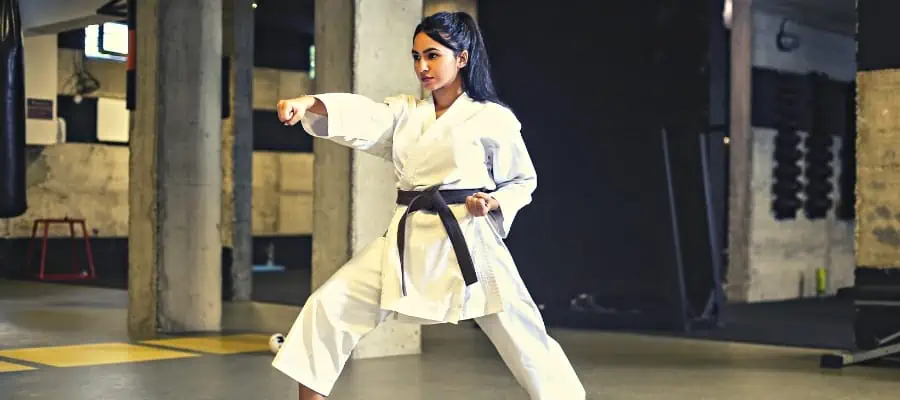
Goju Ryu is not that different from other forms of KarateKarate if you’re a beginner. You’ve got your katas (just 12 in the case of Goju Ryu) and ippon kumite to drill in the basics. Since it has fewer katas, Goju Ryu is easier to learn for beginners. Still, it also requires more physical conditioning as you have to block strikes with your body.
Tang Soo Do features long-range kicks to the head and upper body, so you need more flexibility in your lower body than Goju Ryu. It also requires much hip movement to generate power in these kicks. Apart from these differences, I would consider both styles equally viable for someone whose body is relatively fit (capable of holding a stance and striking).
Comparing the Forms and Ranking Systems

Goju Ryu has 12 core kata that you must master before the rank of Sandan (3rd-degree black belt). For basic movement, power generation, and breathing techniques, you learn Kihongata. Gekisai contains a lot of Shuri-te techniques, while Saifa is influenced by ancient Chinese martial arts with its hammer fists and back fists.
Much like any other form of Karate, Goju Ryu has a color-coded belt that denotes your rank. It starts with white (10th Kyu) and goes up to black (1st Dan). The black belt has a total of 7 to 10 Dans, depending on your proficiency. Over 30 years of training is required to reach 6th Dan or higher.
Tang Soo Do also has forms, they are called Hyeong. There is Kee Cho, Pyung Ahn, Bassai, Naihanchi, Chil Sung, and Yuk Ro. And you have a color-coded ranking system similar to KarateKarate, going from white to black belts.
Final Words
I hope this article on Goju Ryu karate vs. Tang Soo Do helped you gain some insight into which style is better for you. Ultimately, it comes down to personal preference and whether your locality has good schools for certain styles. Plenty of “Mc Dojos” are run as businesses rather than places where you can train your mind and body, so choose wisely.
If this article was helpful to you, don’t forget to add it to your Pinterest board.
Recent Posts
What is Manachai's Fighting Style? Unveiling Muay Thai Mastery
Manachai, a celebrated figure in the Muay Thai world, has captivated audiences with his exemplary martial prowess. Hailing from the heartlands of Thailand, his name is synonymous with the art of...
What Was Chamuekpet Hapalang's Fighting Style? Unveiling Techniques
Chamuekpet Hapalang was a renowned figure in the world of Muay Thai (record 200-48-2), embodying a fusion of Muay Bouk and Muay Khao styles. Originating from Thailand, the art of Muay Thai is known...

